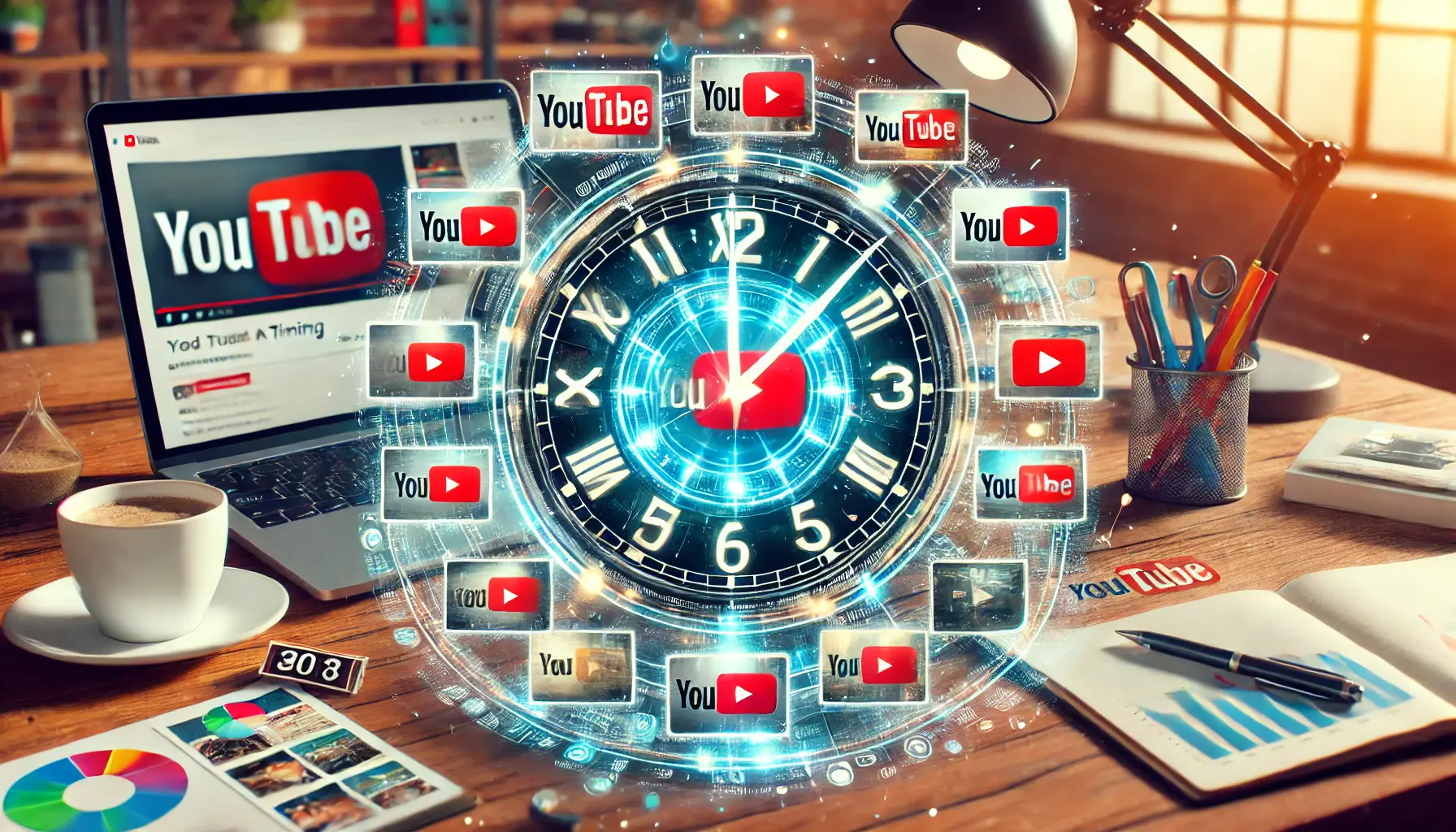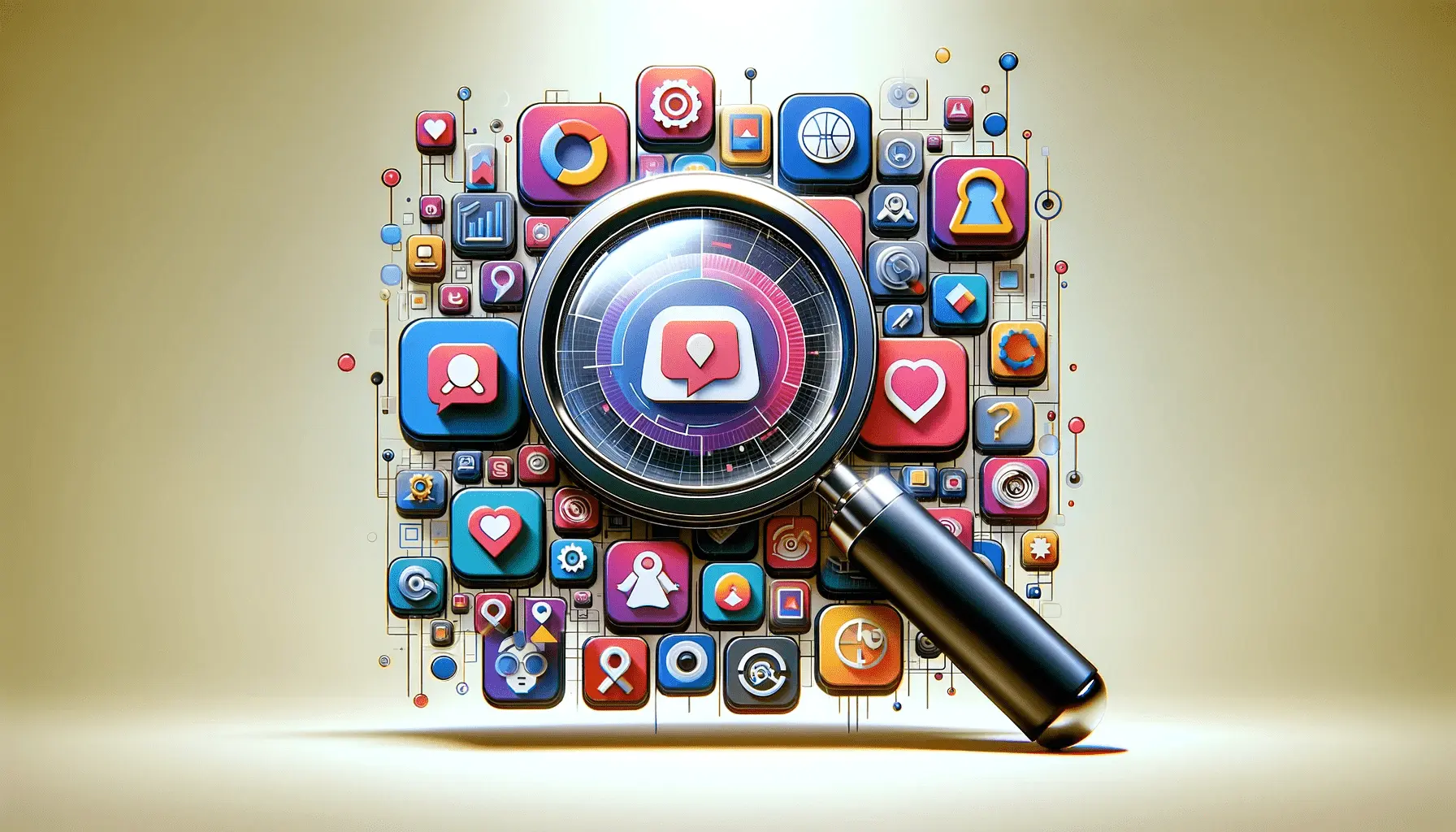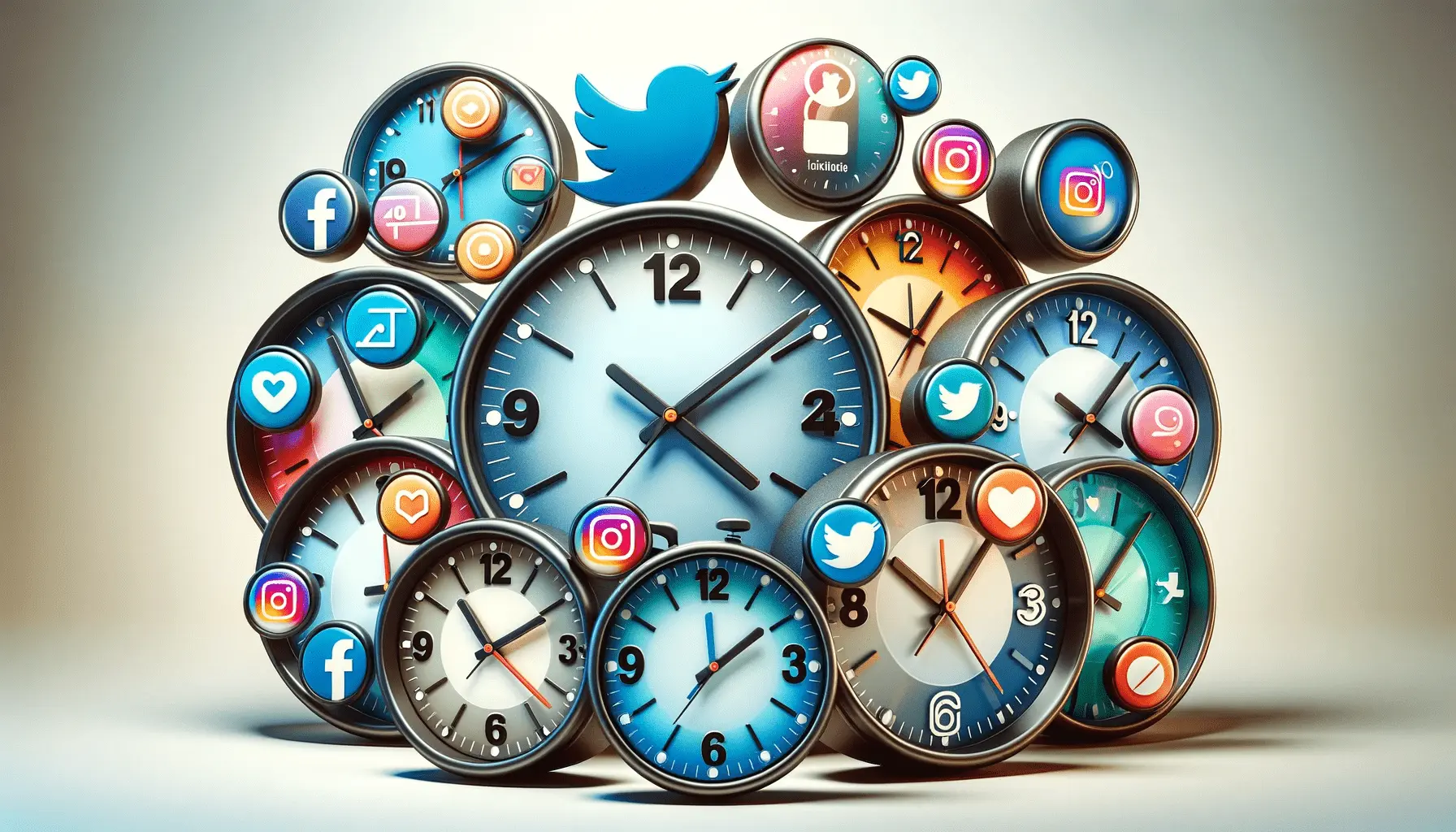In today’s digital age, timing your LinkedIn ads is crucial.
The right ad timing can be the difference between success and failure.
By aligning your ads with user behavior, you can ensure your content reaches the most targeted individuals at the optimal moment.
Let’s explore the subtleties of LinkedIn user behavior and how you can use this data to optimize your ad campaign.
- Understanding LinkedIn’s User Engagement Patterns
- Ideal Days and Times to Publish LinkedIn Ads
- Taking Advantage of LinkedIn’s Ad Scheduling Options
- Measuring and Analyzing Ad Performance
- Common LinkedIn Ad Timing Errors and How to Avoid Them
- Mastering Ad Timing for LinkedIn Success
- LinkedIn Ad Timing FAQs
Understanding LinkedIn’s User Engagement Patterns
Knowing the nuances of user behavior on LinkedIn is essential for achieving the best ad timing.
By identifying when users are most active, you can schedule your ads for peak visibility and engagement.
Busiest Weekday Hours
LinkedIn activity peaks at specific hours on weekdays.
Understanding these periods can help you schedule your ad campaigns for maximum impact.
- Tuesday and Wednesday Mornings: Posting from 10 a.m. to 12 p.m. on these days generates higher activity. Professionals actively search for industry content during these hours.
- Thursday Mid-Morning: Between 10 a.m. and 12 p.m., users are more receptive to new content, making it an ideal time to run LinkedIn ads.
By placing your ads during these peak hours, you increase the chances of reaching a highly engaged audience.
Engagement Variations Across Industries
It’s also important to recognize that user engagement on LinkedIn varies by industry.
Scheduling your ad timing based on your specific industry can improve effectiveness.
- Healthcare: Activity is highest between 9 a.m. and 1 p.m. from Tuesday to Friday.
- Technology: Mondays at 11 a.m. see more engagement.
- Education: The most active times are at 9 a.m. on Wednesdays and from 11 a.m. to 1 p.m. on Fridays.
Identifying these industry-specific trends allows you to optimize your ad schedule so that your content has the greatest impact when your audience is most active.
By tailoring your ad timing strategy to fit these patterns, you can significantly enhance your LinkedIn ad performance.
Scheduling your ads based on LinkedIn’s busiest weekday hours can significantly boost engagement. Target peak periods like mid-morning on Tuesdays and Wednesdays to maximize visibility.
Ideal Days and Times to Publish LinkedIn Ads
Timing is crucial in maximizing the impact of your LinkedIn ads.
By scheduling your ads to post during the best times for active users, you can enhance reach and engagement.
Here are the ideal days and times to optimize your ad timing strategy.
Ideal Days for Maximum Reach
Determining the best days to publish your ads is essential for successful ad timing.
Studies show that some weekdays provide better user engagement on LinkedIn.
- Tuesday and Wednesday: These are especially good days to post, with user activity at its highest during mid-morning hours. Posting your ads on these days can result in more visibility.
- Thursday: Another high-engagement day, particularly between mid-morning and early afternoon. Running ads on Thursdays can further expand your reach.
Applying your ad campaigns on these particular days can greatly enhance your ad timing strategy.
Ideal Time Slots for Ad Posting
Besides selecting the right days, it is also important to know the ideal times for posting your advertisements in order to be effective at ad timing.
Statistics show that user engagement varies throughout the day.
- Mid-Morning (10 a.m. to 11 a.m.): Users are likely to browse their LinkedIn feeds during this time, making it an ideal window for ad placement.
- Lunchtime (12 p.m. to 1 p.m.): Placing ads during lunch hours may reach professionals while they are on break.
- Early Evening (5 p.m. to 6 p.m.): As individuals finish work, they may browse LinkedIn, providing another opportunity for ad engagement.
Scheduling your ad during these specific time slots can lead to higher engagement and an improved advertising campaign.
Tuesday, Wednesday, and Thursday are the best days to post LinkedIn ads, with engagement peaking mid-morning and around lunchtime. Aligning your campaigns with these time slots can improve reach and effectiveness.
Taking Advantage of LinkedIn’s Ad Scheduling Options
Optimizing your LinkedIn ad campaigns involves a strategic use of ad timing.
Although LinkedIn’s native platform does not yet have built-in ad scheduling features, knowing alternative methods and tools can help you maximize your advertising campaigns.
Creating Campaign Schedules
Currently, LinkedIn does not support showing ads at specific times directly within its platform.
This limitation prevents advertisers from scheduling ads for precise hours or days using LinkedIn’s native tools.
However, there are workarounds to address this challenge:
- Manual Management: Advertisers can manually start or stop campaigns based on preferred timings. This approach requires close attention to ensure advertisements are displayed during optimal periods.
- Third-Party Tools: Utilizing external platforms can offer more flexibility in handling ad timing. These platforms typically provide advanced features that allow advertisers to fine-tune advertisement scheduling, ensuring campaigns align with target audience activity trends.
By applying these methods, you can optimize your ad delivery to better match user engagement times, making your campaigns more effective.
Applying Third-Party Tools to Improve Scheduling
To overcome LinkedIn’s native scheduling limitations, several third-party tools can assist in managing and streamlining your ad campaigns:
- SocialBee: SocialBee offers detailed scheduling capabilities, allowing you to organize and post content on LinkedIn and other platforms. Its intuitive interface and advanced features make it a top choice for marketers.
- Hootsuite: Known for its robust social media management tools, Hootsuite enables ad scheduling and analytics tracking across multiple platforms, including LinkedIn. It provides a centralized dashboard to monitor and optimize campaigns.
- Buffer: Buffer allows for easy scheduling of LinkedIn posts, along with analytics to measure performance. Its simplicity and efficiency make it suitable for businesses of all sizes.
Integrating these tools into your marketing strategy gives you greater control over ad timing, ensuring your content reaches your audience when they are most active and engaged.
While LinkedIn’s native platform may not currently support ad scheduling, leveraging third-party solutions can bridge this gap, enhancing the precision and effectiveness of your advertising efforts.
Since LinkedIn lacks built-in scheduling, advertisers must rely on manual ad management or third-party tools like Hootsuite and Buffer to control ad delivery times efficiently.
Measuring and Analyzing Ad Performance
Learning the effectiveness of your LinkedIn ads is essential to improving your marketing campaign.
Through thorough monitoring of performance indicators, you can determine what is working well and where changes are needed.
Let’s go through the basic metrics to watch and how to efficiently analyze them to optimize your ad timing strategy.
Key Metrics to Monitor
Some key performance indicators (KPIs) are essential when measuring your LinkedIn ad performance:
- Impressions: The number of times your advertisement appears before users. This metric indicates the reach of your campaign. The higher the impressions, the greater the awareness of your brand.
- Click-Through Rate (CTR): The percentage of people who clicked on your ad after viewing it. CTR is calculated by dividing the number of clicks by the number of impressions and multiplying by 100. A high CTR typically means that your ad content is engaging and relevant to your target market.
- Cost Per Click (CPC): The average amount you pay each time a user clicks on your ad. Monitoring CPC helps you manage your ad spend and determine the cost efficiency of your campaigns.
- Conversions: The number of desired actions (e.g., form completions, downloads, or purchases) users take after clicking on your ad. Tracking conversions allows you to measure the direct impact of your ads on business objectives.
- Cost Per Conversion: The average cost incurred for each conversion. This indicator enables you to measure the return on investment (ROI) of your campaigns. A lower cost per conversion indicates that you are utilizing your advertising budget more efficiently.
Adjusting Strategies Based on Analytics
Analyzing these metrics provides valuable insights that can improve your ad timing and overall advertising strategies:
- Low CTR: If your CTR is low compared to industry benchmarks, consider revising your ad copy, images, or targeting parameters to ensure your ads reach the right audience.
- High CPC: A high CPC may indicate competitive bidding or inefficient targeting. Narrowing your audience groups or adjusting your bid strategy can help reduce costs.
- Low Conversion Rate: If users are clicking your ads but not converting, evaluate the landing page experience. Ensure that the landing page aligns with the message in the ad and provides a clear conversion path.
- High Cost Per Conversion: To lower this metric, focus on optimizing both your ads and landing pages for better performance. A/B testing different ad creatives and landing page layouts can lead to improvements.
Regularly comparing these metrics and making data-driven adjustments will make your LinkedIn advertising campaigns more effective, resulting in increased engagement and higher ROIReturn on Investment (ROI) measures the profitability of an ad campaign by comparing revenue to cost..
Tracking key metrics such as impressions, CTRClick-Through Rate (CTR) is the percentage of users who click on an ad after seeing it., CPCCost Per Click (CPC) is the amount paid by an advertiser each time a user clicks on an ad., and conversionsA conversion is a desired action taken by a user, such as signing up, purchasing, or downloading content. allows you to fine-tune your ad timing strategy and optimize campaign performance.
Common LinkedIn Ad Timing Errors and How to Avoid Them
Effective operation of your LinkedIn ad campaigns relies on careful attention to ad timing.
However, several common errors can undermine your efforts.
Let’s explore these mistakes and how to avoid them.
1. Leaving Ads Running 24/7 Without Regard to Audience Activity
Running ads continuously without considering when your target audience is most active can lead to unnecessary budget waste and reduced engagement.
For B2BBusiness-to-Business (B2B) refers to transactions or marketing strategies between businesses rather than individual consumers. campaigns, it’s generally best to run ads during office hours when decision-makers are more active.
2. Not Setting Frequency Caps
Without frequency caps, your audience may see the same ad repeatedly, leading to ad fatigueAd fatigue occurs when an audience sees the same ad too often, leading to decreased engagement. and decreased performance.
LinkedIn automatically caps ad frequency, ensuring that a single ad is shown to the same person only once every 48 hours.
3. Poor Audience Targeting
Targeting a broad audience without proper segmentation can result in low engagement and higher costs.
It’s important to establish your ideal customer persona (ICP) and target accordingly.
Avoid using audience expansion features that could dilute your target audience.
4. Ignoring Analytics and Performance Data
Failing to track and analyze ad performance results in missed opportunities for optimization.
Monitoring key metrics such as click-through rates (CTR), conversion rates, and cost per conversion allows you to make data-driven decisions to improve your campaigns.
5. Not Optimizing for Mobile
With a large portion of LinkedIn users accessing the platform via mobile devices, failing to optimize your ads for mobile can mean missing out on potential opportunities.
Ensure that your ad visuals and landing pages are mobile-friendly to create a seamless user experience.
6. Overlooking the Landing Page Experience
Driving traffic to a poorly designed landing pageA landing page is a web page designed to receive visitors from marketing campaigns and encourage specific actions. can result in high bounce rates and low conversions.
Make sure your landing page aligns with your ad’s message and style, includes a clear call to action, and is optimized for fast loading times.
By staying aware of these common errors and implementing corrective actions, you can refine your ad timing strategy, enhance campaign effectiveness, and achieve better results.
Running ads 24/7 without considering audience activity leads to wasted budget and lower engagement. Optimize timing to ensure your ads reach active users.
Mastering Ad Timing for LinkedIn Success
Elevating your LinkedIn ad campaigns to the next level is not merely about developing engaging content—it’s about strategic ad timing.
By understanding when your target audience is most active and making scheduling decisions based on data, you can boost engagement, save money, and improve conversions.
Let’s summarize the key takeaways from this article and how they can drive your LinkedIn advertising success.
Key Takeaways for Effective LinkedIn Ad Timing
- Understanding User Activity: Knowing when LinkedIn users are most active simplifies the scheduling process, ensuring ads are placed for optimal visibility. Research suggests that weekdays between mid-morning and early evening, particularly from Tuesday to Thursday, tend to generate the highest engagement.
- Best Time to Post Ads: Posting ads during peak hours—mid-morning (10 a.m. to 11 a.m.), lunchtime (12 p.m. to 1 p.m.), and early evening (5 p.m. to 6 p.m.)—positions your message in front of your audience when they are most likely to engage.
- Leveraging LinkedIn’s Features: While LinkedIn does not offer a built-in ad scheduling function, third-party tools like Hootsuite, SocialBee, or Buffer allow you to automate ad timing for better campaign performance.
- Monitoring and Optimizing Strategies: Tracking key performance indicators such as CTR, CPC, conversions, and cost per conversion enables you to refine campaigns for maximum impact.
- Avoiding Common Pitfalls: Running ads 24/7 without audience targeting, failing to optimize for mobile, and ignoring analytics are mistakes that can limit your LinkedIn ad performance.
Why Ad Timing Matters More Than Ever
Digital marketing is a dynamic field where audience behavior on LinkedIn shifts based on trends and industry conditions.
Ensuring that your ad timing aligns with these behavioral patterns provides a competitive advantage.
Here’s why ad timing is critical for an effective LinkedIn campaign:
- Higher Engagement Rates: Ads displayed at the optimal time generate more clicks and interactions, improving overall performance.
- Cost Efficiency: Running ads during active hours reduces wasted impressions and lowers CPC, ensuring maximum budget efficiency.
- Better Conversion Potential: Well-timed ads mean your audience is more likely to take action, leading to higher conversion rates.
- Stronger Brand Awareness: Scheduling ads at the right time places your brand in front of decision-makers and prospects when they are most open to engaging.
Final Thoughts
Success with ad timing on LinkedIn requires a combination of research, strategic execution, and continuous performance analysis.
By leveraging user activity data, delivering ads at peak engagement periods, and regularly monitoring key metrics, you can refine your approach for better results.
However, there is no universal solution.
Experiment with different posting times, test various ad creatives, and adjust your targeting to determine what works best for your business.
With a well-planned ad timing strategy, your LinkedIn ads will not only reach the right audience but also generate meaningful conversions that contribute to your overall marketing success.
Experimenting with different posting times and ad creatives can help identify the most effective LinkedIn ad timing for your target audience.
Enjoyed the article? Let its author handle your social media ads. Visit our service page to get started!
LinkedIn Ad Timing FAQs
Being aware of the intricacies of ad timing on LinkedIn plays a significant role in your campaign performance.
Here are the most commonly asked questions and their concise responses to assist with your planning.
Currently, LinkedIn does not support native ad scheduling capabilities.
Advertisers must manage ad start and end times manually or use third-party solutions for automated scheduling.
Weekdays, specifically Tuesday and Wednesday, are typically the most active days on LinkedIn, making them the best times to run ad campaigns for higher engagement.
Mid-morning (10 a.m.
to 11 a.m.) and early evening (5 p.m.
to 6 p.m.) are optimal times when users are actively browsing LinkedIn.
To automate ad timing, use third-party tools like Hootsuite or Buffer, which allow for better control over ad scheduling and delivery.
Yes, running ads during peak engagement periods can lead to higher CPCs due to increased competition for ad placements.
Weekends generally experience lower engagement rates on LinkedIn.
It is recommended to focus ad spend on weekdays for better performance.
Tracking performance weekly allows for timely adjustments and optimization of ad timing strategies to improve results.
While LinkedIn does not provide time zone targeting, manual adjustments or third-party tools can help manage ad delivery times efficiently.
Ad daypartingDayparting is the practice of scheduling ads to run at specific times of the day to maximize engagement. is the practice of scheduling ads to run at specific times.
While LinkedIn does not offer this feature natively, third-party platforms enable advertisers to implement dayparting.










